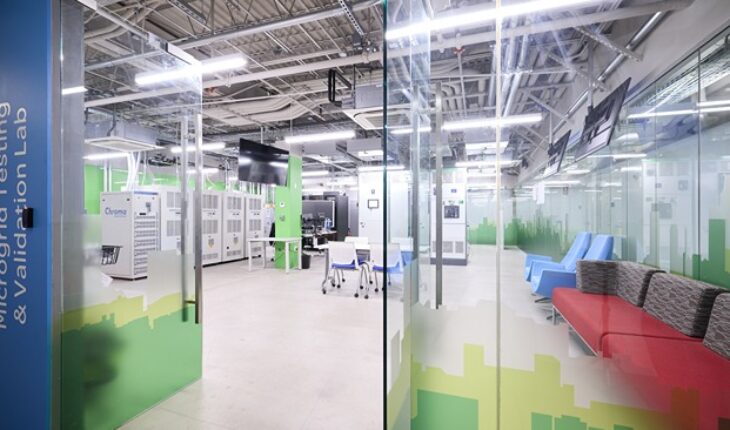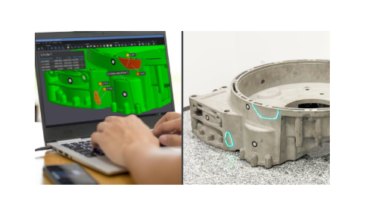New microgrid lab simulates, tests and validates microgrids in real-world situations.
Schneider Electric, the leader in the digital transformation of energy management and automation, held a ribbon cutting today to mark the opening of new data center and microgrid research laboratories in the heart of its Global R&D Center in Andover, MA.

The new labs are a part of €2.26 billion (approx. $2.4 billion) that the company invested in 2024 globally to support research and development. Andover is one of five R&D centers operated by the company.
With the addition of the new spaces, Schneider Electric now has 40 labs in Andover. The 6,000-square-foot Power Distribution Unit (PDU) laboratory contains three testing bays and allows researchers to test high-powered voltage systems that the company designs and develops for the AI data center market. The 1,500-square-foot microgrid laboratory includes four 90kW grid simulators and three 45kW solar simulators, simulating the power demands of roughly 300 homes and solar energy for 110 homes. The lab enables researchers to test fully functioning microgrids under real-world conditions, allowing Schneider to more quickly design and deliver microgrids for its customers.
In 2024, Schneider Electric’s energy-management business grew by double digits. As part of industry-leading efforts to develop energy strategies to unlock the AI era, Schneider Electric recently released new data center reference designs in partnership with Nvidia to support liquid-cooled, high-density AI clusters. In North America, Schneider Electric has designed, built and maintains 350-plus advanced microgrid projects. Last year, Schneider Electric microgrids in the United States managed more than 100 gigawatts of energy, enough to power 75 million homes.
The new labs solidify Schneider Electric’s position as the largest clean energy company in Massachusetts. The company employs 1,600 people in the state, including 700 at the Andover facility. Schneider Electric’s many investments in the Boston region include sponsoring all Boston Athletic Association events as the organization’s “Official Sustainability Partner,” including the iconic Boston Marathon presented by Bank of America, as well as the Boston 5K, Boston 10K and Boston Half.
The investment also supports the recently passed Mass Leads Act, which aims to grow the state’s economy via emerging industries, such as climate tech, life sciences and artificial intelligence. Yvonne Hao, Secretary of the Executive Office of Economic Development, and Rebecca Tepper, Energy and Environmental Affairs, Commonwealth of Massachusetts, attended today’s ceremony.
Power Distribution Lab Tests Reliable, Efficient Systems for Data Centers, IT Networks
The data center lab features high-voltage test stations and 3D-printing stations. Schneider Electric offers modular and configurable PDUs. These units are known for their robust design, ease of installation, and integration with Schneider Electric’s EcoStruxure software platform, ensuring seamless operation and optimization of power usage. This includes testing basic, metered, and switched PDUs that offer varying levels of monitoring and control to meet different needs. For example, NetShelter Metered Rack PDUs provide remote monitoring of connected loads, which helps in managing and optimizing power usage.
Microgrid Lab Simulates Distributed Energy Resources in Real-World Situations
The microgrid lab can test various distributed energy resources (DERs), including on-site renewables like solar, backup generators, battery energy storage systems and EV charging, for buildings on campuses or in office parks.
The microgrid lab also offers rigorous testing for battery energy storage systems to ensure peak performance during critical periods, such as high-peak pricing or grid interruptions. The Andover facility features Schneider Electric’s new Battery Energy Storage System (BESS), an all-in-one, behind-the-meter, energy-storage system. Seven-foot and 20-foot containerized battery systems were installed and are used to simulate energy storage.
For more information, visit se.com.





